I've been meaning to write about finishing wooden doors for a long time, but what convinced me was a post where someone asked for help from people in the know with tips on how to best paint a wooden door themselves. I thought maybe he's not the only one, maybe there are others who take the time to DIY little, so we've put together some tips that might be useful.
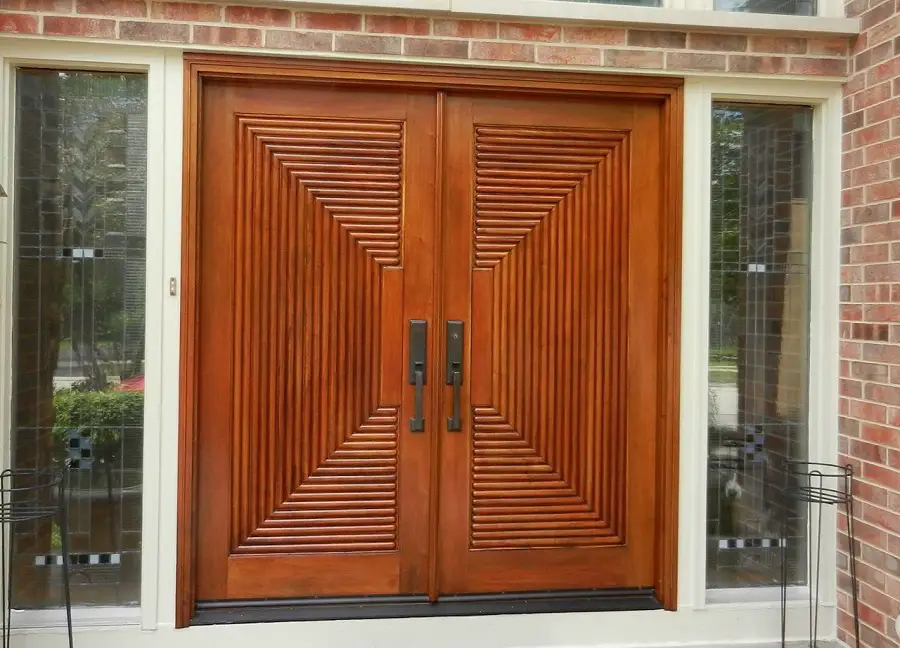
Wooden doors can be of many kinds: interior, exterior, veneered, solid wood panel, timber, etc. The finish can also be transparent or opaque, with or without gloss, coloured or natural. The choice of materials and finishing is made according to the type of door in order to achieve the best results in terms of both durability and appearance.
The first operation is wood sanding. Even if the sanding was done in the factory, the wood has to be sanded again because in the meantime it has absorbed moisture from the air and the grain has risen. In addition, there may be stains, impressions, small scratches or other defects that may have occurred during storage. Sanding is done with sandpaper with a grain size of 120 to 180-200, depending on the species. Hardwood (oak, fag, nuc) is sanded with coarser paper, the soft (fir, spruce, plop) with thinner paper. Medium abrasive sponges can also be used. Sanding can also be done with simple sanding machines. After sanding, the door is stripped and wiped with ordinary thinner or technical alcohol to remove any grease stains.
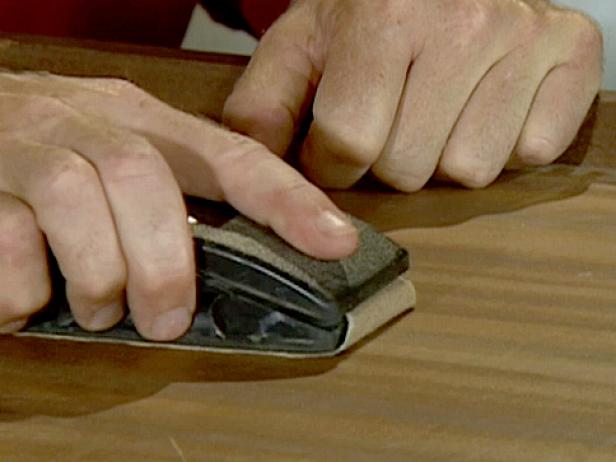
Sometimes, during sanding, small defects such as fibre pull-outs or holes can be discovered. They should chituite. Use wood putty from trade. Keep in mind that it shrinks as it dries and you put on excess, then sand to level the surface. Regular putties are compatible with both solvent-based and water-based stains, and no stains appear after staining. You can also make your own putty from wood dust and nitro or aracite varnish, but if you've never done this before, it's best not to experiment. The materials you will be covering the door with may not be compatible with these putties and spoil the final look.
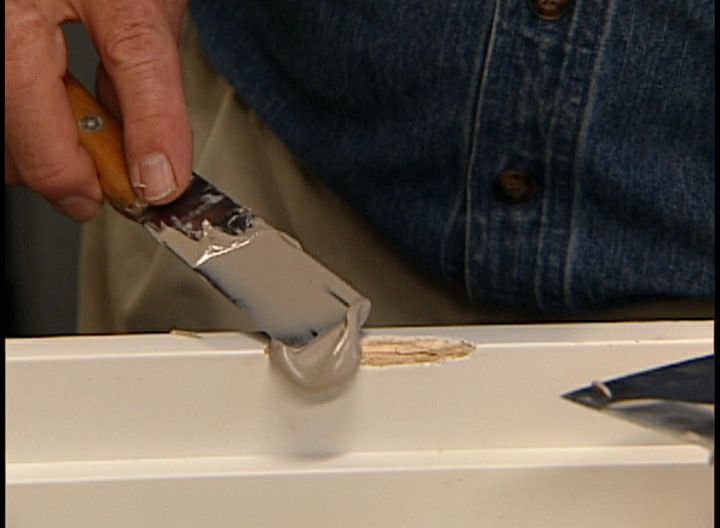
If a transparent finish is chosen, the door can be varnished directly or stained first. Depending on its purpose - interior or exterior - colouring is done with simple, ordinary stains or with special UV-resistant staining solutions. When you buy the bath, the fact that it is for outdoor use should be specified on the label. If you use ordinary baths the colour will fade and turn grey within a few months.
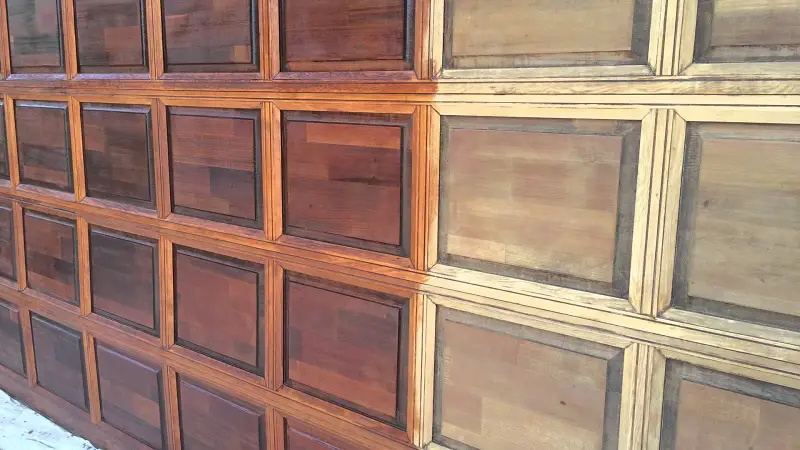
The application of the bath can be done with a brush, cloth, sponge or trowel. If the bath is on solvent, choose the mop or sponge that will last. They are available and not much more expensive. As it is a relatively straight surface I recommend applying with a trowel. The amount deposited is better controlled and you reduce the risk of staining. Don't apply a large amount of the bath from the beginning. Wood absorbs differently and there is a risk of staining. Better to go back a 2nd and 3rd time until you reach the desired colour. The problem with doors is that although their large, straight surface can be finished easily, the same surface will show up flaws much better. I didn't say anything about spray honing because I assumed there was no gun. If however you have a spray gun application information find here.
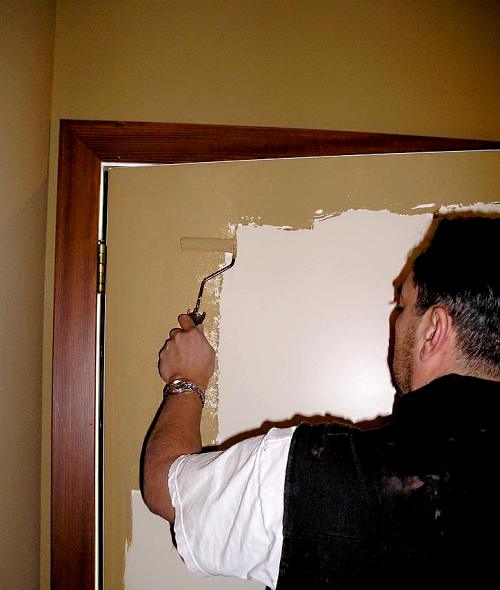
Do not sand after staining, even if you notice that the wood grain has risen a lot (especially with water-based stains). The stain can be easily removed when sanding. Do this after applying the first coat of primer which fixes the colour.
For priming and varnishing you can use the same or different products. Primer and varnish each have their own role. The primer provides adhesion to the wood, sands easily and coats better. Varnish has surface properties, i.e. resistance to physical, chemical or mechanical attack, gloss, stain. There are also products that act as primer and varnish and can be applied layer on layer with intermediate sanding. They have some disadvantages (slower sanding, lower surface resistance), but for DIY projects they are good because they reduce the quantity to be bought and simplify things.
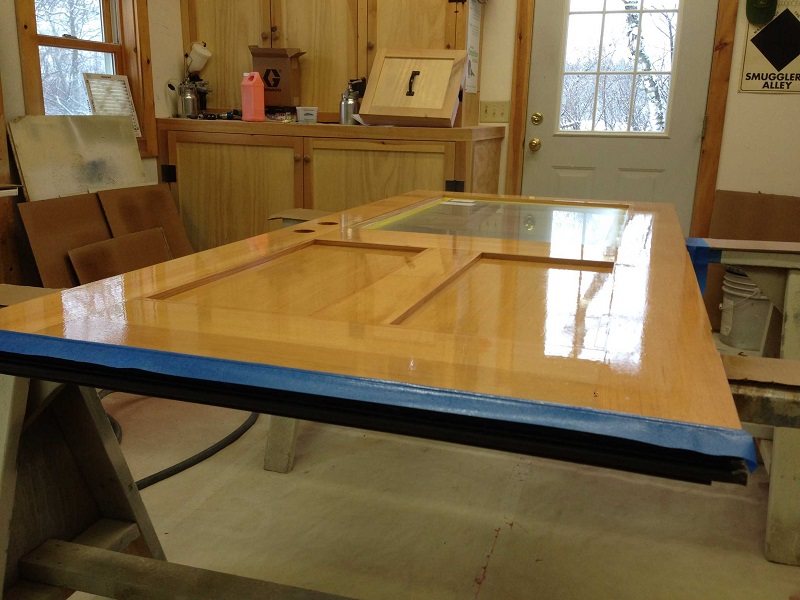
Primers and varnishes are also for interior or exterior use. Outdoor varnishes contain UV absorbers that reduce the sun's aggressive action, are more elastic and weather-resistant. Indoor varnishes do not have these qualities and will crack and peel very quickly if used outdoors.
After the first coat of primer (or single product) has been applied and driedsanding between layersto achieve a smooth, smooth surface with a pleasantly smooth, smooth surface. Sanding is done with 280-320 sandpaper if the lacquer is matt, or over 400 if it is glossy. After sanding the surface is wiped with a cloth to remove dust. Do not use wet or dirty cloths as residues may remain that are incompatible with the next coat. After wiping apply the 2nd coat of primer, if applicable, or the final coat of varnish. For hardwood one coat of primer and one coat of varnish is sufficient. For soft oneThe second coat of primer is also necessary before the final coat because of the higher absorption.
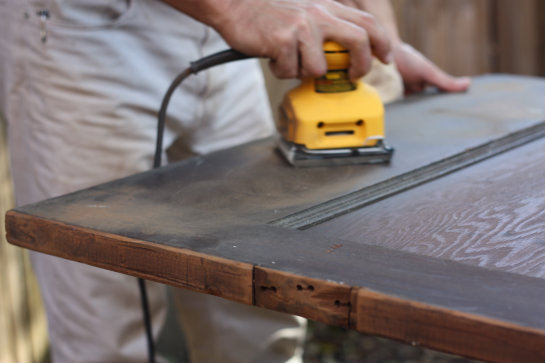
The varnishes and primers used can be of different types, more or less resistant, with or without hardening. I recommend that you do not bother with special varnishes, which are very hard and more difficult to apply, unless the door is going to be in very difficult conditions. For normal conditions, even if we are talking about bathrooms and kitchens in apartment blocks, water-based varnishes from DIY stores are very suitable.
If for some reason you want to cover the wood, it can be painted. The white preparation is done in the same way and the staining is no longer necessary. Primers and varnishes coloured in the desired colour are used and the application and sanding between coats is done in the same way. When using light colours the primer can be white regardless of the colour to follow. If the final colour is dark it is recommended to use a primer of the same colour. In this case too, there are materials that can be applied layer by layer (as primer and varnish).
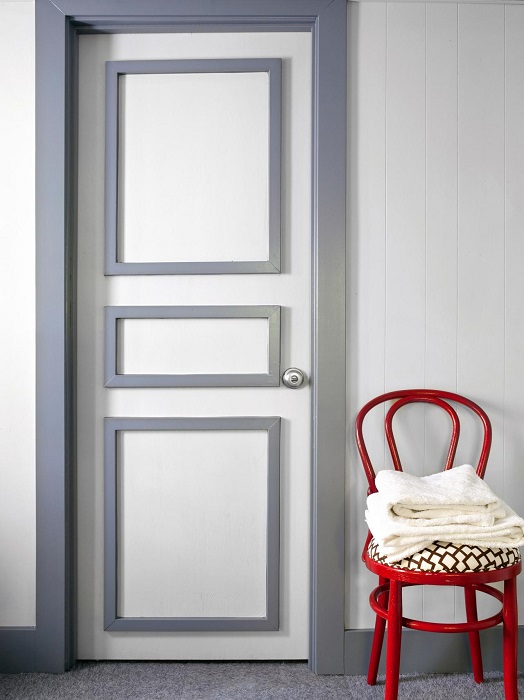
There are coloured primers and varnishes for outdoors too. Like the transparent ones they are elastic and UV and weather resistant. In fact they are the most durable outdoor finishes, providing the best UV protection. Next come the matt transparent ones and the least resistant are the very glossy and very matt transparent ones. The very glossy ones have no pigments or matting agents to stay in the path of the sun's rays, while the very matt ones (0-10) become porous and can absorb water.
I set out to give you some advice and ended up writing a whole story. But I wanted to give you as much information as possible so that you can do the project without fear of making a mistake. I wish you success and hope it helps.
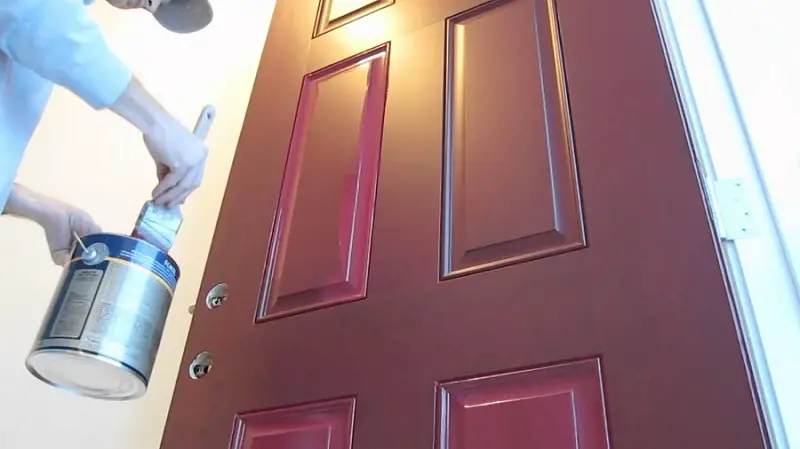






























[...] The full article is available on the Wood Magazine website [...]
I have some doors painted white with a thinner based paint. Two years ago at a shop, the worker told me that I can paint with eco paint (water based) over if the old paint is older than 2 years. It wasn't. The worker only got to give one coat, unfortunately on all the doors in the house. I stopped everything but the damage was done... I couldn't find out with what I could remove that coat (which is removed anyway, just not easily), even if I wrote to the manufacturer (it's Kober eco white paint). Maybe you can advise me what to strip it with so I can recondition the doors.
Plus I didn't understand exactly. After the old coat of paint is sanded off a primer is applied and then the new coats of paint?
And while I'm here. I would like to paint some lacquered panelling (next to the white doors mentioned above) with white paint. To match the doors. Can I apply paint to them if I sand lightly and give them a coat of primer? It's a lot of work to sand them completely.
Hello.
You should sand lightly without removing the paint layer but only to increase the adhesion of the new paint layer. It will be quite difficult to remove the layer. You can use a paint stripper (Decanol), but it is difficult to control and will also act on the old paint layer. If you don't want to get to the wood the only solution is to sand until you remove the new coat.
The primer is designed to cling very well to the wood and form a nice layer over which to lay the lake. It is the factory way of finishing furniture and other wooden objects. It is not compulsory to use unless the manufacturer says that a varnish cannot be used without primer first. If it is an old varnish you can varnish without primer. Wood primer is not the same as primer that is given on metal and protects it from rust.
You can paint old wood panelling even without primer. The important thing is that the white paint is compatible with the lacquer given in the past. For the new paint to adhere, clean the old coat well (wash it with water and detergent, then wipe it well and let it dry). Over time, grease has been deposited that prevents adhesion. After sanding, sand lightly with sandpaper with a grain size of 240 and upwards or with fine abrasive sponges. Remove dust and apply paint. You should have no more adhesion problems.
Good luck!
Don't forget to subscribe to the printed Wood Magazine! For only 58 lei/year you can find out news in the field, discover craft ideas or trade secrets. We remind you that the content in the printed magazine is different from the one on the website. Details in the link below.
Thank you!https://revistadinlemn.ro/product/abonament-revista-din-lemn/
hello..i have a door painted with penotex.d.do you paint it with that? thanks
and brownish
Good evening.
Pinotex is an Akzo Nobel brand used mainly in Moldova, Russia and Ukraine. In Romania, practically the same products are used, but under the Sadolin brand.
All the best!
[...] View Image More Like This [...]
I have the interior doors with a collar (this is how they were bought)
But on the window and sides the collar is starting to come off and it looks ugly.
I don't know what kind of wood/palm is underneath the tights
Do you think it's possible to discolour the whole door and paint?
Hello!
In general, the glue is applied to doors on plywood or other wood derivatives that do not have a very nice surface. You can remove the foil (using a hair dryer makes it easier), sand the surface to remove adhesive and foil residue and paint. The paint will cover any surface defects.
All the best!
How friendly are water-based wood paints, given that the painting will be done in the apartment where we live with small children?
Good evening!
Water-based paints do not give off any disturbing odours, do not contain volatile organic compounds (VOCs) and if painting is not done by spraying, but with a brush or a trowel, it is not a problem. For safety use gloves.
It is not good to train children in the painting process if the paints are not organic.
All the best!
Hello.
I would like to change the colour of the doors in the house.I don't think they are wooden,they were already painted.Can they be painted in another colour and what kind of paint do you recommend?
Good evening!
It is important to know what they are covered with. If the doors are painted, the most suitable is water-based paint because it is compatible with almost all types of paint. Before painting you should degrease them and remove the dirt that has accumulated over time. It is done simply by washing the surface with water and dishwashing detergent. Finally, wipe and let it rinse. For better adhesion, lightly sand the surface with a fine abrasive sponge or 280 or 320 grit sandpaper.
If the surface is melamine or laminated, adhesion is very low and very good adhesion materials must be used. You can use chalky paints. But they are expensive and need to be protected with wax to be durable. There are also synthetic paints for applying to melamine. I know there is an Oskar paint with such properties.
All the best!
Hello.
I would like to refurbish the doors in my apartment. They are pine wood, lacquered, with glass mesh. They are 10 years old and are starting to look worse. At the joints the wood looks like it has cracked and the lacquer is starting to peel. In some places they are dented and need to be grouted. I intend to paint them matt white. To get them to come out nice would I need to put a stripper paste on them to get to the wood or is sanding enough? What do you advise? And what products would you recommend me to use?
Thank you!
Hello!
Given that the wood is battered and voids have appeared at the joints, all paint should be removed down to the wood, holes and defects grouted, sanded and white paint reapplied. That way you are guaranteed to get smooth and pleasant looking surfaces. If you just sand the current coat, the holes and dents will continue to show and you won't be able to cover up the defects in the joints.
But be careful with the joints. It is possible that the spacing has occurred due to the decrease in humidity in the room during winter. Now, when the humidity returns to normal, so will the wood. If normal grout is used in such rooms it is possible that in winter, when the humidity drops again, it will crack and the defect will reappear. Use a hardening putty.
All the best!
Hello! Can these oak doors from Leroy be painted with water-based paint?
I leave here the link https://www.leroymerlin.ro/products/usi-interior/583/usa-interior-lemn-natur-cu-toc-larisa-plina-latime-88-cm-stejar-stanga/34174
Thank you
Hello!
Yes, it can be painted.
If it is a chalky, Annire Sloan type paint, wax or varnish should be applied at the end for fixing and water resistance.
For other water based paints - do not dilute more than 5% to avoid excessive wood grain lift.
For a pleasant cough, lightly sand the surface of the door after the first coat of paint.
Good luck!
Good evening.
I have an MDF (walnut) door, unfortunately I damaged it with a cold degreaser.
How could I recondition it?
I would try water based paint!!!
What do you advise?
Thank you !!!!
Hello!
If the MDF is peeled, it cannot be repaired by painting because it will have no adhesion. Unfortunately the only solution is to re-folder.
If it is painted MDF, you can paint it with water-based paint. But first you need to degrease the surface with water and dishwashing detergent, wipe thoroughly and leave to dry. The door should then be sanded with 280 or 320 grit sandpaper or a fine abrasive sponge. Without sanding, the paint has no adhesion to the old coat and at the first stroke it will peel off and you will flay it like leather.
There is also a no-sanding alternative, but you have to use Annie Sloan-type chalky paints. To have resistance the paint must be fixed with a coat of wax or varnish.